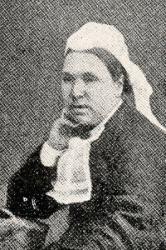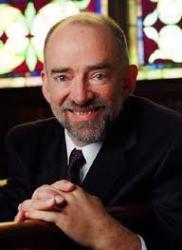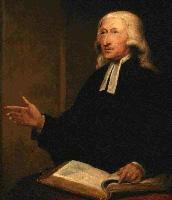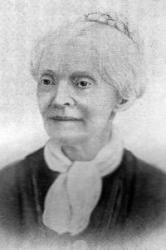Planning worship?
Check out our sister site, ZeteoSearch.org,
for 20+ additional resources related to your search.
- |
User Links
Person Results
Saint Patrick

372 - 466 Person Name: St. Patrick (ca. 389-ca. 461) Topics: Service for the Lord's Day Opening of Worship; Acts of the Church Confirmation; Acts of the Church Ordination; Acts of the Church Installation; Christian Year Trinity Sunday Author (attributed to) of "I Sing as I Arise Today" in The Worshipbook Patrick, St., the 2nd Bishop and Patron Saint of Ireland, was the son of Calpurnius, a deacon, and grandson of Potitus, a presbyter, and great grandson of Odissus, a deacon, was born most probably near Dumbarton, in North Britain, in 372. According to his epistle to Coroticus, his father was also a decurio, a member of the local town council, and a Roman by descent. Hence probably the name Patricius. St. Patrick alludes in Coroticus, § 5, to his having been originally a freeman, and of noble birth. His birthplace is termed in his Confession, § 1, Bannavem Taberniæ. Some have identified that place with Boulogne-sur-Mer, in France. His mother's name was Concessa, said to have been sister of St. Martin of Tours. According to Tirechan's Collections (circa A.D. 690), Patrick had four names—-(1) Magonus, which Tirechan explains by clarus, illustrious; (2) Sucat (Succetus), god of war, or brave in war, said to have been his baptismal name; (3) Patricius; and (4) Cothraige (Cothrighe), given because he had been a slave to four masters. At the age of 16 he was carried off with many others to Ireland, and sold as a slave. There he remained six years with Milcho, or Miliuc. He was engaged in feeding cattle (pecora), though the later writers say that he fed swine. In his captivity he became acquainted with the Irish language. His misfortunes were the means of leading him to Christ, and be devoted himself to prayer, and often frequented, for that purpose, the woods on Mount Slemish. Having escaped after six years, he spent some years with his parents, and then was stirred up, when still a youth (puer), to devote himself to the evangelisation of Ireland. According to Secundinus's Hymn (St. Sechnall), which is probably not much later than the age of St. Patrick himself, the saint received his apostleship "from God," like St. Paul. No reference is made in that hymn, or in the later so-called Hymn of St. Fiacc, to any commission received from Pope Celestine, as is asserted by later writers. St. Patrick does not in his own writings allude to the external source whence he obtained ordination, and, as he speaks of his Roman descent, it would be strange for him not to have mentioned his Roman consecration, if it had been a fact.
From some “sayings" of his, preserved on a separate page of the Book of Armagh, it is probable that he travelled through Gaul and Italy, and that he was ordained in Gaul as deacon, priest, and, afterwards, as bishop. He was probably a bishop when he commenced his missionary labours in Ireland. There were, however, Christians in Ireland before that period. Palladius, the senior Patrick, who preceded our saint by a few years, was, according to the chronicle of Prosper (the secretary of Pope Celestine), "ordained and sent to the Scots (the Irish) believing in Christ, by Pope Celestine, as their first bishop." Palladius's mission was a failure, while that of the second Patrick, which was quite independent of the former, was successful in a high degree. Its success, however, has been greatly exaggerated; for St. Patrick, in the close of his Confession, or autobiography, written in old age, speaks of the high probability of his having to lay down his life as a martyr for Christ. The date of St. Patrick's mission is not certain, but the internal evidence of his writings indicate that it was most probably about A.D. 425. The day and month of his death (March 17), but not the year [466] is mentioned in the Book of Armagh.
St. Patrick's claim to a record in this Dictionary is associated with the celebrated hymn or “Breastplate," a history of which we now subjoin.
1. St. Patrick's Irish Hymn is referred to in Tirechan's Collections (A.D. 690). It was directed to be sung in "all monasteries and churches through the whole of Ireland," "canticum ejus scotticum semper canere," which is a proof that it was at that time universally acknowledged to be his composition. That regulation was very naturally lost sight of when the old Celtic Church lapsed into the Roman, (a) The expressions used in the hymn correspond entirely with the circumstances under which St. Patrick visited Tara. (b) Moreover, although all the ancient biographies of St. Patrick (with the exception of his own Confession, and of Secundinus's Hymn) speak of him as a worker of miracles, and as having performed miracles at Tara, there is no trace of such a fact in St. Patrick's Hymn, (c) Further, the phrase, "creator of doom," which twice occurs in it, according to the most approved translation, curiously corresponds with another fact that, "my God's doom," or “the doom," or "judgment of my God," was, according to the ancient biographies, one of St. Patrick's favourite expressions.
2. The first notice of the existence at the present time of an ancient manuscript copy of St. Patrick's "Hymn or Breastplate," was made known by the late Dr. Petrie in his Memoir of Tara, published in the Transactions of the Royal Irish Academy, 1839, vol. xviii. Dr. Petrie gave the original in Irish characters, an interlineary Latin version and an English translation by himself, together with copious notes. Dr. Petrie found the original in the Liber Hymnorum, in the Library of Trinity College, Dublin (iv. E. 4, 2, fol. 19 b). “The tradition respecting its primary use by the saint is that he recited it on Easter Sunday, when proceeding to encounter the droidical fire-worshippers, with their pagan king, Laoghaire, and his court, at Tara, the royal residence." (Lyra Hibernica Sacra, 1878, p. 2.)
3. Dr. Todd in his work, S. Patrick, Apostle of Ireland, 1864, gives a metrical rendering of the “Breastplate” which begins:—
"I bind to myself today,
The strong power of an invocation of the Trinity,
The faith of the Trinity in Unity,
The Creator of the elements."
The translation, which extends to 78 lines, was mainly the work of Dr. Whitley Stokes. A more correct version by the same scholar is given in the Rolls's edition of the Tripartite Life, 1887; and that revised version, with a few modifications, accompanied with critical notes, explanatory of the alterations made on the former version, is given in the 2nd and 3rd editions of the Writings of St. Patrick, by Dr. V. H. H. Wright. Dr. Whitley Stokes, therefore, is to be regarded as the real translator from the original Irish. Dr. Petrie's translation, though highly meritorious as a first attempt, has been proved in many particulars to be erroneous. There is no mention of Tara in the hymn. An uncertainty yet exists as to the meaning of a few words.
4. In Dr. W. MacIlwaine's Lyra Hibernica Sacra, 1878, Dr. Todd's translation was repeated (with notes), together with a second translation by James Clarence Mangan, the opening lines of which are:—
"At Tara to-day, in this awful hour,
I call on the Holy Trinity!
Glory to Him Who reigneth in power,
The God of the elements, Father, and Son,
And Paraclete Spirit, which Three are the One,
The everlasting Divinity."
5. A popular version of the hymn for congregational use was written by Mrs. Cecil F. Alexander, for St. Patrick's Day, 1889, and sung generally throughout Ireland on that day. The opening lines are:—
"I bind unto myself to-day
The strong Name of the Trinity,
By invocation of the same,
The Three in One and One in Three.
”I bind this day to me for ever,
By power of faith, Christ's Incarnation;
His baptism in Jordan river;
His death on Cross for my salvation;
His bursting from the spiced tomb;
His riding up the heav'nly way;
His coming at the day of doom;
I bind unto myself to-day."
Mrs. Alexander's version is given, along with that of James Clarence Mangan, in the Appendix to the Writinqs of St. Patrick, edited by Dr. C. H. H. Wright (R.T.S.), 1889.
6. Another metrical version of this hymn was given in the Irish Ecclesiastical Gazette for April 5, 1889. It is by Joseph John Murphy, and the opening lines are:—
"I bind as armour on my breast
The Threefold Name whereon I call,
Of Father, Son, and Spirit blest,
The Maker and the Judge of all."
7. The translation in Stokes and Wright's edition of St. Patrick's writings was set to music as a cantata by Sir R. Stewart, and was performed for the first time in St. Patrick's Cathedral, Dublin, on St. Patrick's Day, 1888.
8. Mr. Thomas French, Assistant Librarian of Trinity College, Dublin, writes as follows respecting this hymn:—
"The manuscript called the 'Liber Hymnorum' belonged to Archbishop Ussher, and forms one of the volumes of the Ussher Collection now in the Library of Trinity College, Dublin. There is no interlineary Latin translation in the original. It was given by Petrie in his account of the hymn 'for the satisfaction of the learned’ [The St. Patrick authorship is tradition only, so far as I know.] Dr. Todd in his S. Patrick, Apostle of Ireland, p. 426, says ‘It is undoubtedly of great antiquity, although it may now be difficult, if not impossible, to adduce proof in support of the tradition that St. Patrick was its author.'...... Petrie and Todd make the age of the manuscript 9th or 10th century, Whitley Stokes 11th or 12th."
We may add that St. Patrick's Latin works were published by Sir James Ware, 1656, in the Acta Sanctorum of the Bollandist Fathers, 1668, by Villanueva, 1835, and by others, as B. S. Nicholson, 1868, Miss Cusack, 1871, and, above all, by Dr. Whitley Stokes, in the Rolls' Edition of the Tripartite Life, 1887. The latter three works contain also translations. Translations of the whole, or a portion of St. Patrick's writings, have been published by Rev. T. Olden, 1876; Sir S. Ferguson, LL.D. Transactions of Royal Irish Academy, 1885, and more completely in the Writings of St. Patrick, edited by Prof. G. T. Stokes and Dr. C. H. H. Wright, 1st ed. 1887, 2nd ed. 1888, 3rd ed., edited, with notes critical and historical, and an introduction by Dr. C. H. H. Wright revised and enlarged. London: Religious Tract Society, 1889. [Rev. Charles H. H. Wright, D.D., Ph.D.]
--John Julian, Dictionary of Hymnology (1907)
====================
Patrick, St., p. 885, ii. (l) In the Oxford University Herald of April 6, 1889, is an anonymous paraphrase in 7 stanzas of 4 lines of a portion of "St. Patrick's Hymn," beginning-
"Father, Son, and Holy Ghost!
May Thine overshadowing might
Be as armour to my soul,
Be my weapon in the fight."
(2) Note concerning § 3, on p. 885, i., that Dr., W. Stokes's translation appeared in its original form in the Saturday Review, Sept. 5, 1857. In his Goidilica, Calcutta, 1866, p. 66, in an altered form to that of 1857 and 1864.
--John Julian, Dictionary of Hymnology, Appendix, Part II (1907)
Saint Patrick
Mary Fawler Maude

1819 - 1913 Person Name: Mary F. Maude Topics: The Church Confirmation; The Church Confirmation; Children's Services; Consecration Author of "Thine for ever! God of love" in The Lutheran Hymnary Maude, Mary Fawler, née Hooper, daughter of George Henry Hooper, of Stanmore, Middlesex, was married in 1841 to the late Joseph Maude, some time Vicar of Chirk, near Ruabon, and Hon. Canon of St. Asaph, who died in Feb. 1887. Mrs. Maude's hymns were published in her Twelve Letters on Confirmation, 1848, and in Memorials of Past Years, 1852 (privately printed). Her best known hymn, is "Thine for ever, God of love" (Confirmation). Concerning it Mrs. Maude says: --
"It was written in 1847 for my class in the Girls' Sunday School of St. Thomas, Newport, Isle of Wight, and published in 1848 at the beginning of a little book called ‘Twelve Letters on Confirmation,' by a Sunday School Teacher, and reprinted in the Memorials, 1852."
[S. MSS.]
The original is in 7 stanzas of 4 lines. It is usually abbreviated, and stanzas ii., iii. transposed, as in the Society for Promoting Christian Knowledge Church Hymns, 1871; the Hymnal Companion; Hymns Ancient & Modern, 1875, Thring's Collection, 1882, and most other hymnbooks. As a hymn for Confirmation its use is extensive. The omitted stanzas are:—
"Thine for ever in that day
When the world shall pass away:
When the trumpet note shall sound,
And the nations underground
"Shall the awful summons hear,
Which proclaims the judgment near.
Thine for ever.
'Neath Thy wings Hide and save us,
King of Kings."
-- John Julian, Dictionary of Hymnology (1907)
Mary Fawler Maude
Dan Damon

b. 1955 Person Name: Daniel Charles Damon Topics: Response; Baptism; Celebration of Ministries; Christian Year Epiphany; Christian Year Pentecost; Confirmation; Covenanting; Discernment; Discipleship; Justice; Renewal of Baptismal Vows; Service Music Response / Affirmation; Service Music Sending Forth; Trinity; Trust Author of "I Have Called You by Your Name (Te sais...je t'ai appelé(e) par ton nom)" in More Voices Daniel Charles Damon (b. 1955) is an internationally published writer of hymn texts and tunes and is Associate Editor of Hymnody for Hope Publishing Company, Carol Stream, Illinois. Damon is also a jazz pianist and has played in many hotels and clubs in the San Francisco Bay area. He holds degrees from Greenville College, Greenville, Illinois (BME, 1977) and Pacific School of Religion, Berkeley, California (MDiv, 1987). He is an ordained Elder in the United Methodist Church in the San Francisco Bay area and a life member of the Hymn Society in the United States and Canada.
Several single-author collections of Damon's hymns have been published: Faith Will Sing (Carol Stream, 1993), The Sound of Welcome (Carol Stream, 1998), To the Thirsty World (Nashville, 2002), Fields of Mercy (Carol Stream, 2007), and Garden of Joy (Carol Stream, 2011). He collaborated with text writer Gracia Grindal in A Treasury of Faith: Lectionary Hymns Series A (Colfax. 2012). Damon's hymns have been included in several major hymnals and supplements. He has also written hymn translations from Vietnamese, Portuguese, and Shona languages, and, with Patrick Matsikenyiri, edited Njalo, A Collection of 16 Hymns in the African Tradition (Nashville, 1996). He has released three recordings of hymns, carols, and traditional songs, and a solo piano recording of jazz standards (available at www.damonstuneshop.com).
Damon has presented his work at national conferences of the Hymn Society in the United States and Canada and the Fellowship of United Methodists in Music and Worship Arts. He is a contributor to the Canterbury Dictionary of Hymnology.
In 2016, Damon was made a Fellow of the hymn Society, the highest honor The Hymn Society can confer.
Dan Damon
Dan Damon
John Wesley

1703 - 1791 Topics: Living the Faith Ministry; Admonition; Baptism, Confirmation and Dedication; Challenge; Choruses; Church, Family of Believers; Closing Hymns; Commitment and Submission; Discipleship; Encouragement; Fellowship with Others; Humility; Love for Others; Loyalty and Courage; Loyalty and Courage; Obedience; Service; Social Concern; Testimony, Witness, and Evangelism; Truth Author (attributed to) of "Rule of Life" in Zion still Sings John Wesley, the son of Samuel, and brother of Charles Wesley, was born at Epworth, June 17, 1703. He was educated at the Charterhouse, London, and at Christ Church, Oxford. He became a Fellow of Lincoln College, Oxford, and graduated M.A. in 1726. At Oxford, he was one of the small band consisting of George Whitefield, Hames Hervey, Charles Wesley, and a few others, who were even then known for their piety; they were deridingly called "Methodists." After his ordination he went, in 1735, on a mission to Georgia. The mission was not successful, and he returned to England in 1738. From that time, his life was one of great labour, preaching the Gospel, and publishing his commentaries and other theological works. He died in London, in 1791, in his eighty-eighth year. His prose works are very numerous, but he did not write many useful hymns. It is to him, however, and not to his brother Charles, that we are indebted for the translations from the German.
--Annotations of the Hymnal, Charles Hutchins, M.A., 1872
======================
John Wesley, M.A., was born at Epworth Rectory in 1703, and, like the rest of the family, received his early education from his mother. He narrowly escaped perishing in the fire which destroyed the rectory house in 1709, and his deliverance made a life-long impression upon him. In 1714 he was nominated on the foundation of Charterhouse by his father's patron, the Duke of Buckingham, and remained at that school until 1720, when he went up, with a scholarship, from Charterhouse to Christ Church, Oxford. Having taken his degree, he received Holy Orders from the Bishop of Oxford (Dr. Potter) in 1725. In 1726 he was elected Fellow of Lincoln College, and remained at Oxford until 1727, when he returned into Lincolnshire to assist his father as curate at Epworth and Wroot. In 1729 he was summoned back to Oxford by his firm friend, Dr. Morley, Rector of Lincoln, to assist in the College tuition. There he found already established the little band of "Oxford Methodists" who immediately placed themselves under his direction. In 1735 he went, as a Missionary of the Society for the Propagation of the Gospel, to Georgia, where a new colony had been founded under the governorship of General Oglethorpe. On his voyage out he was deeply impressed with the piety and Christian courage of some German fellow travellers, Moravians. During his short ministry in Georgia he met with many discouragements, and returned home saddened and dissatisfied both with himself and his work; but in London he again fell in with the Moravians, especially with Peter Bohler; and one memorable night (May 24, 1738) he went to a meeting in Aldersgate Street, where some one was reading Luther's preface to the Epistle to the Romans. There, "About a quarter before nine, while he was describing the change which God works in the heart through faith in Christ, I felt my heart strangely warmed. I felt I did trust in Christ, Christ alone, for salvation; and an assurance was given me, that He had taken away my sins, even mine, and saved me from the law of sin and death." From that moment his future course was sealed; and for more than half a century he laboured, through evil report and good report, to spread what he believed to be the everlasting Gospel, travelling more miles, preaching more sermons, publishing more books of a practical sort, and making more converts than any man of his day, or perhaps of any day, and dying at last, March 2, 1791, in harness, at the patriarchal age of 88.
The popular conception of the division of labour between the two brothers in the Revival, is that John was the preacher, and Charles the hymnwriter. But this is not strictly accurate. On the one hand Charles was also a great preacher, second only to his brother and George Whitefield in the effects which he produced. On the other hand, John by no means relegated to Charles the exclusive task of supplying the people with their hymns. John Wesley was not the sort of man to depute any part of his work entirely to another: and this part was, in his opinion, one of vital importance. With that wonderful instinct for gauging the popular mind, which was one element in his success, he saw at once that hymns might be utilized, not only for raising the devotion, but also for instructing, and establishing the faith of his disciples. He intended the hymns to be not merely a constituent part of public worship, but also a kind of creed in verse. They were to be "a body of experimental and practical divinity." "In what other publication," he asks in his Preface to the Wesleyan Hymn Book, 1780 (Preface, Oct. 20,1779), "have you so distinct and full an account of Scriptural Christianity; such a declaration of the heights and depths of religion, speculative and practical; so strong cautions against the most plausible errors, particularly those now most prevalent; and so clear directions for making your calling and election sure; for perfecting holiness in the fear of God?" The part which he actually took in writing the hymns, it is not easy to ascertain; but it is certain that more than thirty translations from the German, French and Spanish (chiefly from the German) were exclusively his; and there are some original hymns, admittedly his composition, which are not unworthy to stand by the side of his brother's. His translations from the German especially have had a wide circulation. Although somewhat free as translations they embody the fire and energy of the originals.
It has been the common practice, however for a hundred years or more to ascribe all translations from the German to John Wesley, as he only of the two brothers knew that language; and to assign to Charles Wesley all the original hymns except such as are traceable to John Wesley through his Journals and other works.
The list of 482 original hymns by John and Charles Wesley listed in this Dictionary of Hymnology have formed an important part of Methodist hymnody and show the enormous influence of the Wesleys on the English hymnody of the nineteenth century.
-- Excerpts from John Julian, Dictionary of Hymnology (1907)
===================
See also in:
Hymn Writers of the Church
John Wesley
José Aguiar
Topics: Rites of the Church Confirmation; Ritos de la Iglesia Confirmación; Compartir; Sharing; Despedida; Sending Forth; Ministerio; Ministry; Misión; Mission; Petition/Prayer; Súplica/Oración; Service; Servicio Author of "Enviado Soy de Dios (The Lord Now Sends Us Forth)" in Oramos Cantando = We Pray In Song
José Aguiar
William Boyce

1711 - 1779 Person Name: William Boyce, 1711-79 Topics: Confirmation Service Composer of "SHARON" in Together in Song William Boyce (baptised 1711 – d. 7 February 1779) was an English composer and organist.
See also in:
Wikipedia
William Boyce
Mary D. James

1810 - 1883 Person Name: Mary D. James, siglo XIX Topics: La Iglesia Confirmación; La Vida Cristiana en General; Servicio Cristiano; The Church Confirmation; The Christian Life in General; Christian Service Author of "Mi todo a Dios consagro" in Culto Cristiano Mary Dagworthy Yard James USA 1810-1883. Born at Trenton, NJ, she began teaching Sunday school at age 13 in the Methodist Episcopal Church. She married Henry B James, and they had four children: Joseph, Mary, Ann, and Charles.. She became a prominent figure in the Wesleyan Holiness movement of the early 1800s, assisting Phoebe Palmer (also a hymnist) and often leading meetings at Ocean Grove, NJ, and elsewhere. She wrote articles that appeared in the “Guide to holiness”, “The New York Christian advocate”, “The contributor”, “The Christian witness:, “The Christian woman”, “The Christian standard”, and the “Ocean Grove record”. She wrote a biography of Edmund J Yard entitled, “The soul winner” (1883). She strived to live a life as close to Christ as possible. She died in New York City.
John Perry
Mary D. James
Jorge Maldonado
b. 1944 Topics: Our Response to God in mission and service; The Church Celebrates Confirmation; Church Ministry; Multi-cultrual and World-church Songs; Ordination; Witness Author of "Sent by the Lord am I" in Church Hymnary (4th ed.)
Jorge Maldonado
Iris Stevenson
Topics: Order of Service Response to the Word; Baptism, Confirmation and Dedication; Blessing; Devotional; Jesus Christ His Name; Jesus Christ Our Love For Jesus Arranger of "MY SOUL LOVES JESUS" in Zion still Sings
Iris Stevenson


 My Starred Hymns
My Starred Hymns


